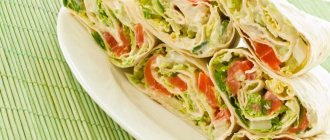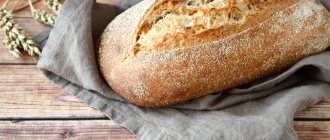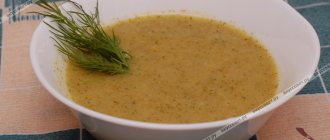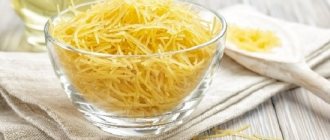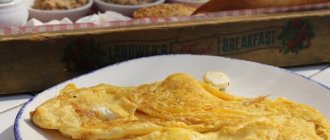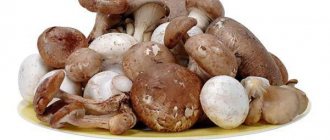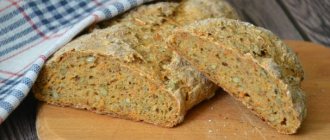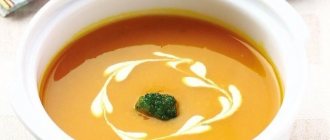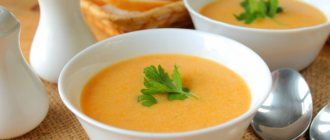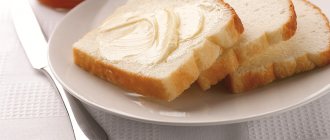The phrase “diet bread” is not fiction at all. Indeed, you can prepare a tasty and low-calorie product. And it's best to do it yourself. After all, such baked goods will consist only of natural and beneficial components for the body and will not contain additives that can harm the body. And thanks to the low amount of calories, this bread is recommended to be consumed not only by those losing weight and adherents of proper nutrition, but also by everyone who cares about their health.
Which bread is considered low-calorie and suitable for weight loss?
Those who want to lose extra pounds and maintain an attractive figure need to reliably know what kind of bread is considered dietary. This is a product that has a low glycemic index - the level of influence of a certain food product on the glucose level in the blood plasma.
Foods with a low glycemic index contain fewer carbohydrates and are therefore low in calories. And foods with a high glycemic index are high in calories. Since the body needs a calorie deficit to lose weight, in order to lose weight and not gain it again, it is necessary to reduce the caloric content of the diet.
Attention! Low-calorie bread is considered dietary and most suitable for weight loss.
Taking into account the glycemic index, the lowest-calorie bread is yeast-free bread (100 g contains about 170-180 kcal). In 2nd place is a product made from bran (calorie content - 227 kcal per 100 g). Yeast whole grain bread contains slightly more calories (229 kcal per 100 g).
But the rye product is not uniquely low-calorie and dietary, since it contains 240-259 kcal per 100 g. But this is still less than wheat bread, which contains from 242 to 265 kcal per 100 g. However, due to the fact that black bread is made from coarser flour, it contains more nutrients and plant fibers.
A real calorie bomb is baked goods made from corn flour. Per 100 g of such a product there are from 266 to 418 kcal. However, such bread is rich in vitamins and minerals.
The calorie content of a baked goods directly depends on the flour from which it is made. The lower the grade, the more it contains poorly digestible dietary fiber and the fewer calories. Therefore, those who cannot refuse wheat baked goods are recommended to eat products made from low-grade wheat flour. However, you should not include such food in your diet for a long time.
Be sure to check out: Diet cabbage salad: the best recipes Safe cleansing: flax seeds for weight loss Kefir on a diet: are alternatives possible Proper castling: how to replace high-calorie treats and allergenic foods on a diet
Crispbread as an alternative: is it possible on a diet?
The opinion that bread is a low-calorie product is wrong. 100 g of products contain, depending on the type and brand, from 310 to 360 kcal. Therefore, their use on a diet should be limited to 5 pieces per day. This is due to the fact that bread is rich in fiber, the digestion of which requires 200 kcal.
Only moderate consumption of bread on a diet will benefit the body. After all, they will help:
- improve metabolism;
- normalize blood pressure;
- reduce the load on the nervous system (it always increases on a diet);
- reduce cholesterol levels;
- reduce the likelihood of blood clots;
- improve the functioning of the circulatory system;
- normalize blood sugar levels;
- reduce the risk of developing diseases of the urinary and digestive tract.
Useful properties of the product
Low fiber intake causes most of the digestive tract problems in modern people. Refined food products, which are completely purified from natural fibers, contribute to the disruption of the proper functioning of all body systems. To solve this problem, food today needs to be enriched with special grain husks in granular form; you can also eat bread with bran. The benefits of this product are quite obvious. Dietary fiber, which is part of bran baked goods, helps regulate the functioning of the gastrointestinal tract, eliminates and prevents constipation, promotes the elimination of cholesterol and toxins, prevents the occurrence of atherosclerosis, increases hemoglobin in the blood and qualitatively improves its composition.
Unrefined fiber lowers the glycemic index of baked goods. This product is great for weight loss, improves the absorption of nutrients from food, and helps cleanse the walls of the digestive organs. Grain fiber is very useful for iron deficiency; it, being a natural adsorbent, solves many problems with skin, hair, fungal diseases and allergies. The disadvantage of bran bread is its specific taste, shape and consistency of the finished product.
The beneficial effects of the product on the human body depend on the proportions of bran in the recipe. The most valuable are baked goods, to which about 20 percent of grain husks are added. However, abuse of such a product can lead to side effects and negative consequences. An adult should not consume more than 30 grams of dry grain shells per day, but it is almost impossible to determine their amount in ready-made store-bought bread. Therefore, if you already eat bread with bran, then no more than 300 grams per day in the morning. If you experience discomfort in the gastrointestinal tract, you should stop baking until the symptoms completely disappear, and then start consuming it in smaller quantities.
The most useful bread with bran is divided into several subtypes, depending on the effect on human health and the methods of its preparation.
He can be:
- Whole grain, which is necessary for diabetes, high cholesterol, excess weight and diseases of the cardiovascular system.
- Live, which is prepared using starters based on sprouts and whole wheat grains. Living bread with bran is useful for vitamin deficiency and excess weight.
- Biobread made exclusively from ingredients of natural origin - seeds, nuts, different types of flour, vegetables (carrots, celery, pumpkin, tomatoes).
- Bread made by removing moisture from bran bread. This is a light and tasty product, but there is a risk of purchasing low-quality products in which the manufacturer has added flavor enhancers and other artificial substances.
The store range of bran bread is quite wide; it is important to choose exactly the product that will be useful for a particular organism. If you can’t find one ready-made, you can easily bake it at home.
We are compiling a list of the healthiest types of flour: whole grain, rye, corn
The presented review of flour varieties is based on the benefits for a healthy body. If you have a number of diseases or pathologies, eating food made from a particular flour may be contraindicated. Therefore, if you have or suspect the presence of diseases of the digestive tract, endocrine system organs, etc. It is recommended to consult a doctor.
Whole grain
The benefits of such flour are justified by the presence of all inclusions of whole grain in it. After all, the main amount of vitamins and minerals is contained in the grain shell, i.e. bran
Interesting! To obtain high-grade flour, you need to remove the grain shells as much as possible, so its benefits are low.
Whole wheat flour is rich in:
- vitamins E, H, B-group;
- calcium;
- manganese;
- iron;
- chrome.
It is extremely important that whole wheat flour is rich in fiber. It stimulates rhythmic contractions of the intestinal wall (peristalsis), which improves digestion and reduces the activity of putrefaction in the intestines.
Baked goods made from whole grain flour do not rise precisely because of their high fiber content.
Rye
In addition to the fact that rye flour contains fewer calories than wheat flour, it is much healthier than the latter. Rye flour is rich in:
- calcium;
- potassium;
- magnesium;
- iron;
- phosphorus;
- B-group vitamins, E.
Interesting! Due to the content of vitamin B9 (folic acid) in rye flour, products made from it should be consumed by those suffering from anemia.
Corn
Despite the high calorie content, eating baked goods made from corn flour will allow you to:
- improve the functioning of the digestive system;
- reduce the risk of stone formation in the urinary system;
- increase hemoglobin levels, reduce blood pressure;
- improve the condition of the skin;
- improve the supply of glucose and oxygen to the brain.
Features of cooking in the oven, slow cooker, bread maker
How to prepare dietary bread at home depends only on desire and the availability of appropriate equipment - there are no significant changes in the recipe. The only differences are in the cooking method.
In the oven
Since the oven is intended for baking only, you will have to knead the dough yourself before placing the dough in it. A definite advantage of baking in the oven is the speed of cooking. Cooking in the oven is suitable for those who want to enjoy the traditional taste of bread. Significant disadvantages:
- you need to set the temperature accurately;
- it is necessary to monitor the baking process;
- You need to independently determine the degree of readiness of dietary bread.
In a slow cooker
Making diet bread in a slow cooker is much easier. Kitchen appliances, in most cases, will not allow baked goods to burn or become soggy, since the baking mode is designed to cook food of optimal quality. Despite this, it is better to periodically monitor the baking process and the readiness of the baked goods.
Cooking diet bread in a slow cooker does not eliminate the need for kneading and maturing the dough. Technology can only bake bread, but not cook it yourself.
In the bread machine
Using a bread machine makes the baking process completely automated. You just need to add the ingredients necessary for diet bread and turn on the baking mode. Then the technology will do everything itself.
Top best homemade bread recipes
You can prepare dietary bread at home not only according to the recipes given below (the most popular ones are indicated), but also according to any others or your own. The key condition is the use of dietary ingredients. Otherwise, you won't be able to lose weight.
Protein
This dietary bread will not only not harm your figure, but will also supply the body with a significant amount of protein. In addition, you won’t be able to find its analogues in the store. To prepare protein diet bread, you need to take:
- almonds – 100g;
- flaxseeds - the same amount;
- wheat bran – 5 tablespoons;
- baking powder – 1 sachet;
- salt – 1 teaspoon;
- low-fat cottage cheese – 300-330 g;
- egg whites – 7 pcs.;
- 10-20 g of any seeds or the same amount of buckwheat or oat bran (future topping).
How to cook:
- Mix all the dry ingredients in a bowl (reserve 15-20 g of bran for sprinkling).
- Add to the mixture of cottage cheese and egg whites.
- Mix everything until a homogeneous consistency is obtained.
- Cover the form for future baking with baking paper.
- Moisten the walls with water and sprinkle with bran.
- Place the dough in a mold and decorate it with seeds or bran.
- Bake dietary bread for 50-60 minutes at a temperature of 160-170⁰C.
Since protein bread contains cottage cheese, it must be stored in the refrigerator.
According to Dukan in the microwave
To prepare dietary bread according to Dukan you need to take:
- 4 tbsp. spoons of oat bran;
- 2 chicken eggs;
- 2 tbsp. spoons of low-fat yogurt without additives;
- 1 teaspoon lemon juice;
- ½ teaspoon baking soda.
Preparation:
- Mix eggs and yogurt with bran.
- Suppress the soda and add it to the dough.
- Mix everything until smooth (preferably with a fork).
- Pour the dough into a special form and put it in the microwave.
- Bake diet bread for 5-6 minutes at maximum power.
With oat bran
To bake this dietary bread, take:
- 150 g whole grain flour;
- 4-5 tbsp. spoons of oat bran;
- 8 g olive oil;
- 70 ml low-fat kefir;
- 3 eggs;
- 10-15 g sesame seeds;
- spices to taste.
Preparation:
- Combine the components and mix thoroughly until a homogeneous mass is obtained.
- Shape the future bread (the dough will be sticky, so you need to periodically wet your hands with water).
- Bake the future dietary bread in the oven for 40-45 minutes at a temperature of 180-190⁰C.
Yeast-free with sunflower seeds
To bake diet bread without yeast, you need to take:
- 300 g whole grain flour;
- 300 ml low-fat or low-fat kefir;
- 1-2 tbsp. spoons of sunflower seeds;
- 1 teaspoon salt;
- ½ teaspoon of soda.
You can give the product a sweet taste by taking 1 teaspoon of sweetener.
Step by step cooking:
- Add salt and sweetener (if desired) to the flour and mix everything.
- Add soda to kefir and stir thoroughly.
- Pour kefir into flour and stir until a soft dough is obtained.
- Add seeds pre-roasted in a dry frying pan.
- Let the dough sit for ½ hour.
- Form a loaf and place it on a baking sheet covered with baking paper or in a mold.
- Shallow cuts are made on the top surface of the dough.
- Bake for 50-60 minutes at a temperature of 200⁰C.
Made from oatmeal
To prepare this dietary bread, take:
- 450 g oatmeal;
- ½ liter of low-fat kefir, fermented baked milk or yogurt without additives;
- 1 tsp. baking powder or soda;
- 10-15 g of flax, sunflower or pumpkin seeds or any other;
- 10 g sesame seeds.
Preparation:
- Mix all components.
- Transfer the dough into the mold.
- Bake for 40-45 minutes at a temperature of 180-190⁰C.
Diet bread with bran
Dietitians convince us that it is impossible to completely exclude bread from the daily diet. This product contains essential microelements. But we all know how much calories store-bought products contain. You can bake dietary yeast-free bread. You don't need expensive ingredients or a lot of time. It is important to follow all recipe proportions.
Ingredients:
- premium wheat flour - 2 ½ cups;
- dough ripper - one sachet;
- salt - a small pinch;
- oat bran – 2 tablespoons. spoons;
- kefir with a fat concentration of 1% - one glass;
- butter – 100 g.
Preparation:
- Melt the butter using any convenient method until you obtain a liquid consistency.
- Pour the melted butter into a bowl with high sides and leave for a few minutes to cool slightly.
- We sift the premium wheat flour and combine it with the ripper. We also add oat bran and a pinch of fine-grained salt.
- Stir all bulk ingredients vigorously with a silicone or wooden spatula.
- When the butter has cooled a little, pour into it one glass of warm kefir with a fat concentration of 1%. Mix these components thoroughly.
- Pour the liquid mixture into the bulk ingredients.
- We knead the dough manually and give the bread the desired shape.
- Grease the refractory mold, bottom and sides with a small amount of refined sunflower seed oil.
- Lay out the dough and leave it for half an hour to rise.
- Then move it to the oven for about 1.5 hours. We bake bread at a temperature threshold of 170°.
Main conclusions
- Eating dietary bread on a diet is allowed.
- The lowest calorie content is in yeast-free bread.
- It is best to prepare dietary bread from whole grain flour or bran.
- Diet bread should be consumed sparingly.
For a number of diseases, it is contraindicated to eat baked goods made from this or that flour. To avoid health problems, it is recommended to consult a specialized doctor about your diet.
Share your diet and low-calorie bread recipes by leaving comments on this page.
Who should not use the product
Despite all the positive qualities of bran bread, there are a number of contraindications for its use. For example, in acute chronic diseases of the gastrointestinal tract, it can cause increased pain and exacerbation of critical conditions. During periods of calm, you can eat baked goods, but in moderation. Among the diseases for which bran bread should be excluded from the diet are:
- gastritis and stomach ulcers in the acute stage;
- pancreatitis;
- haemorrhoids;
- colitis;
- problems with the large intestine, diarrhea;
- avitaminosis.
